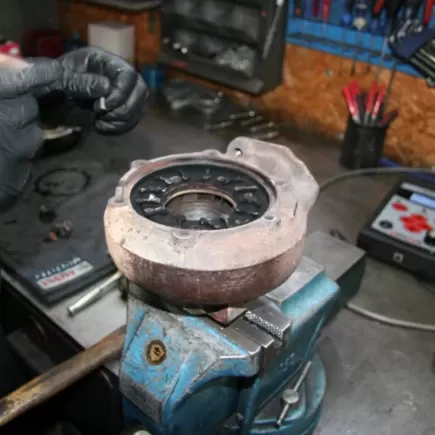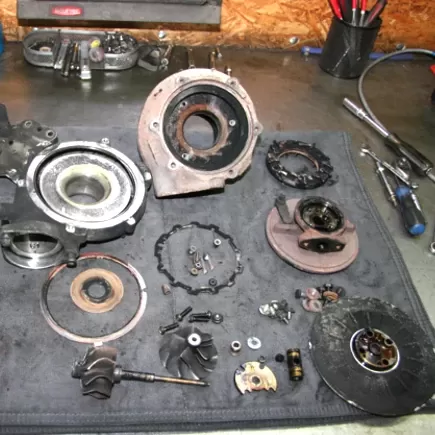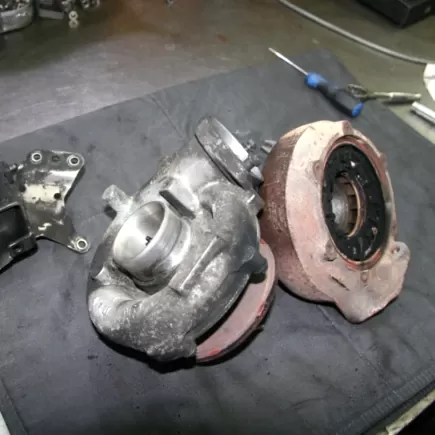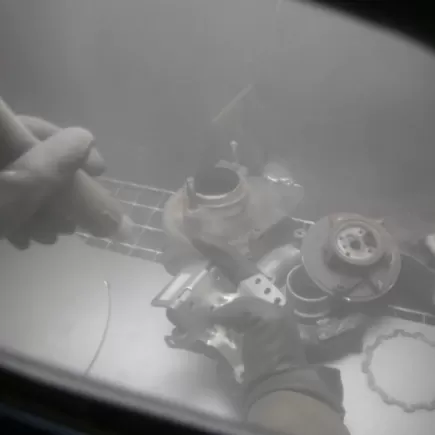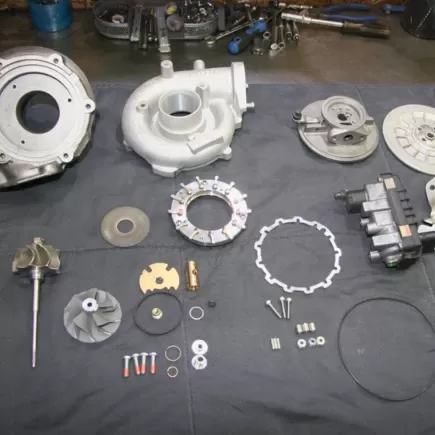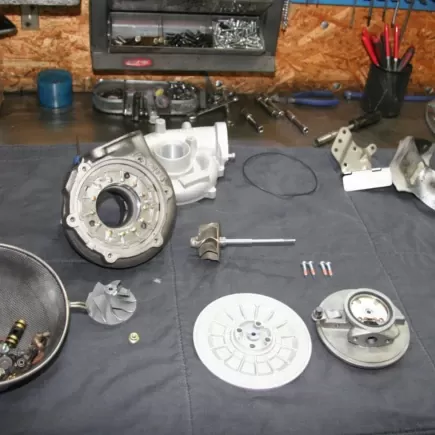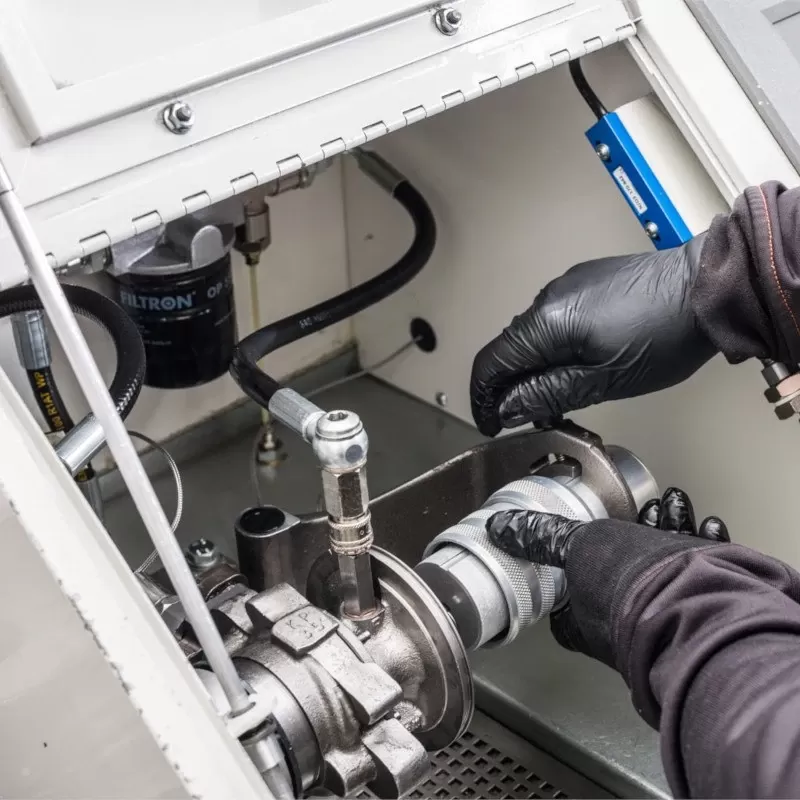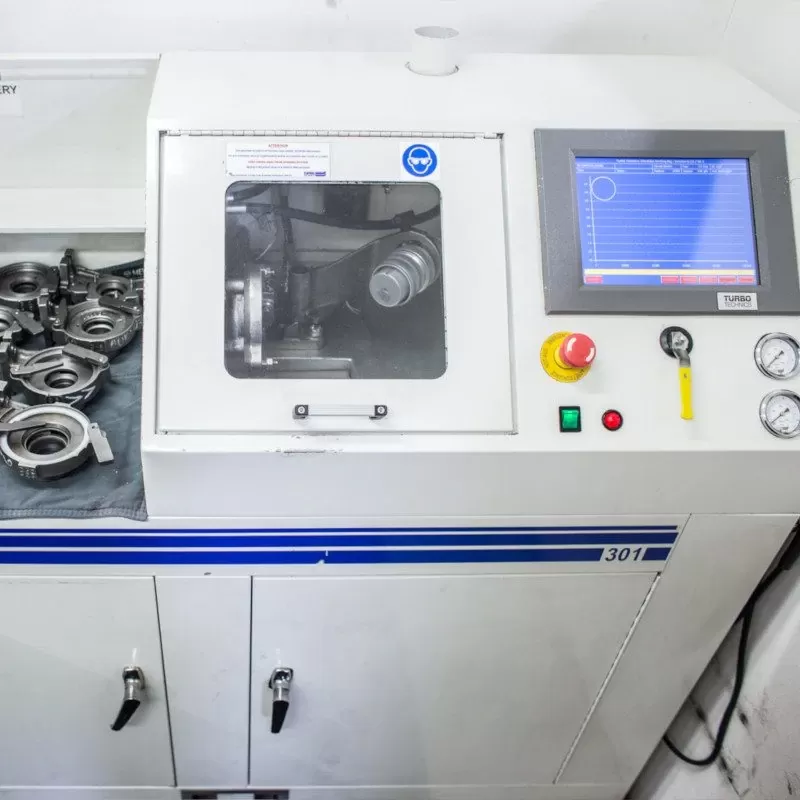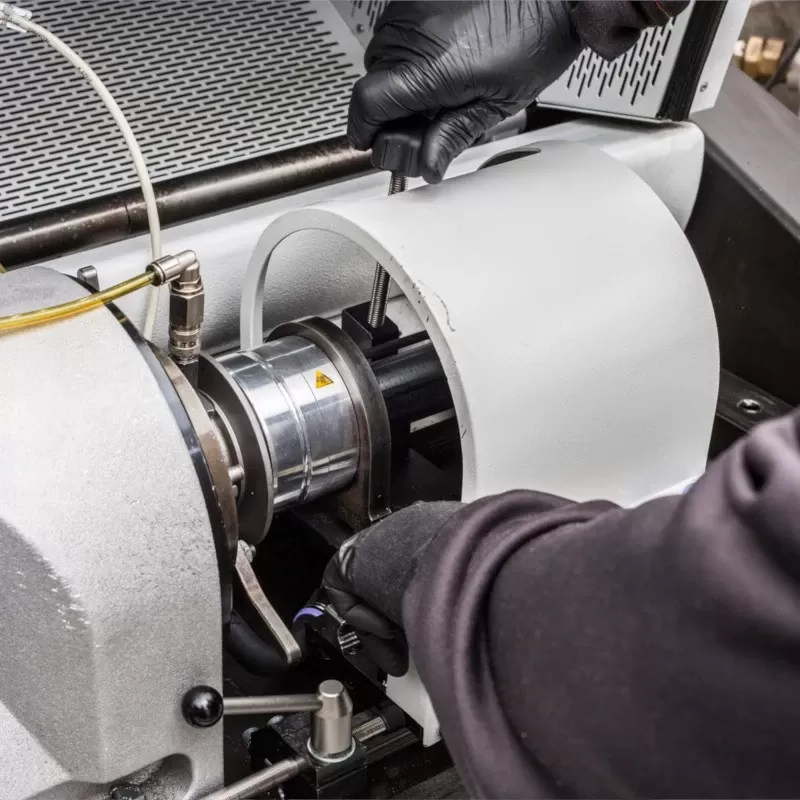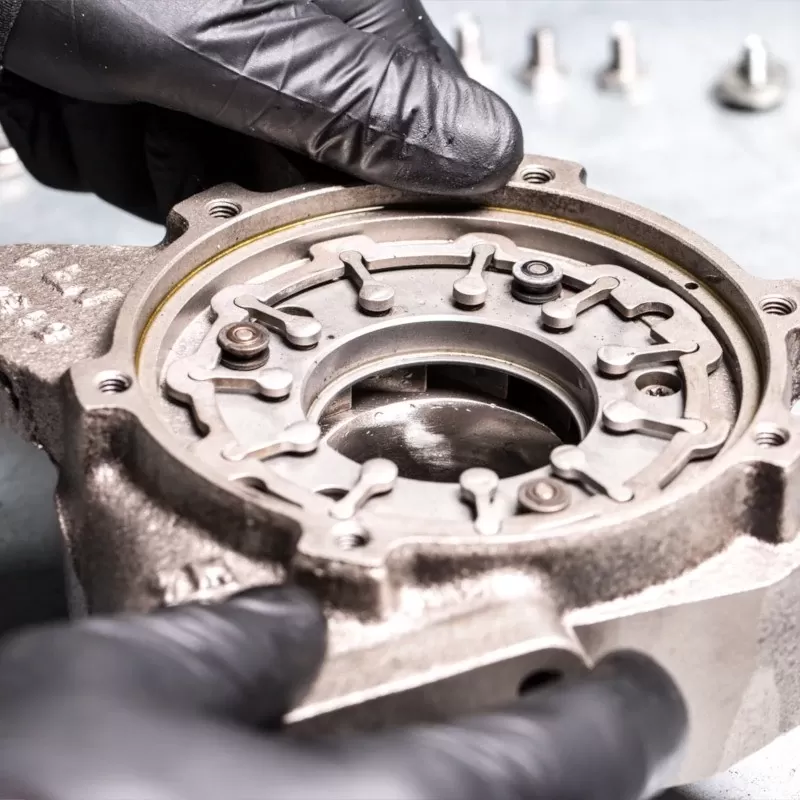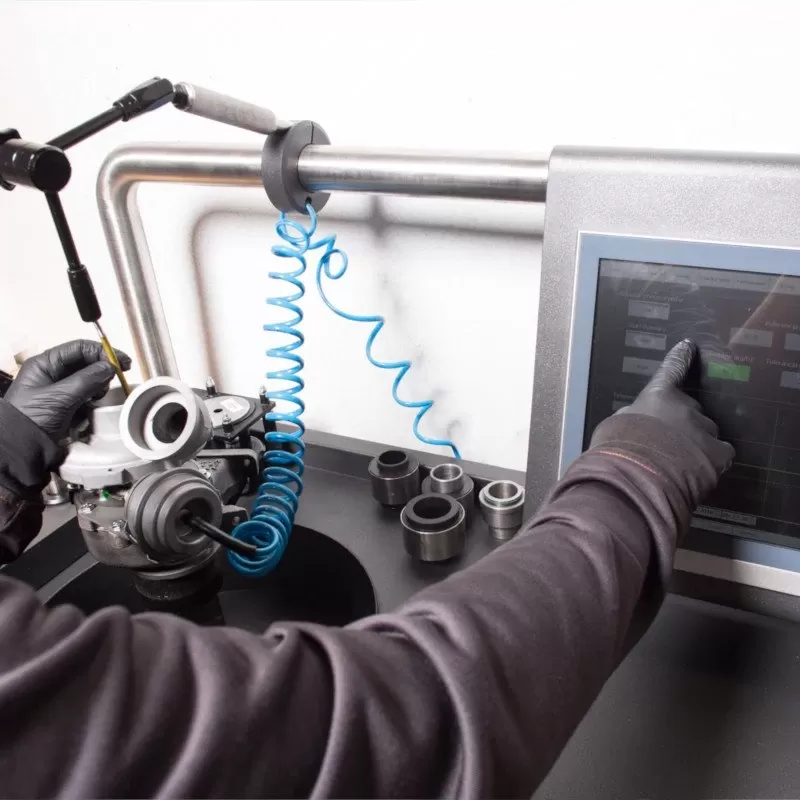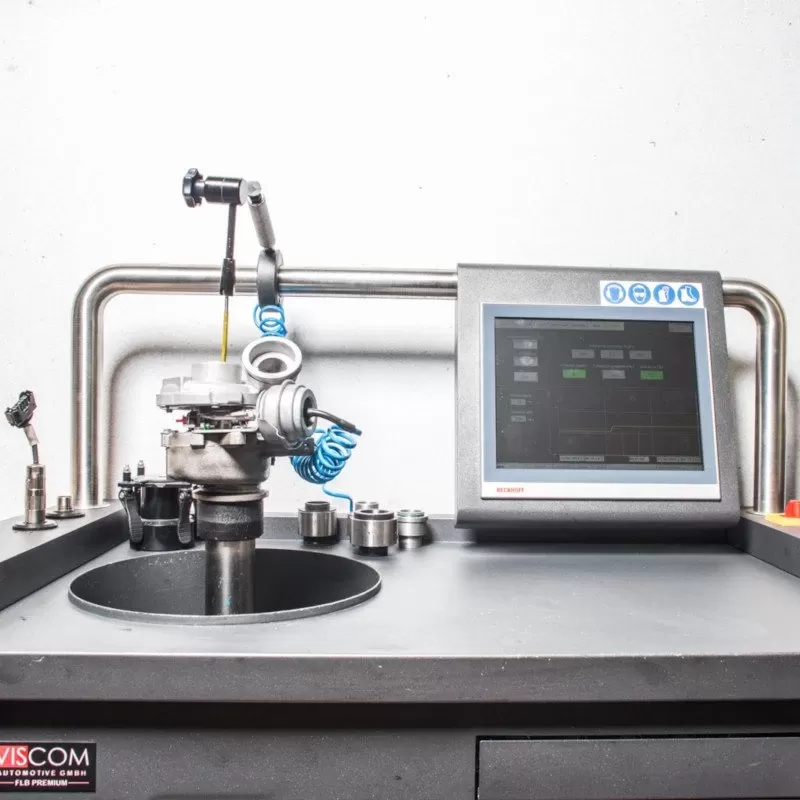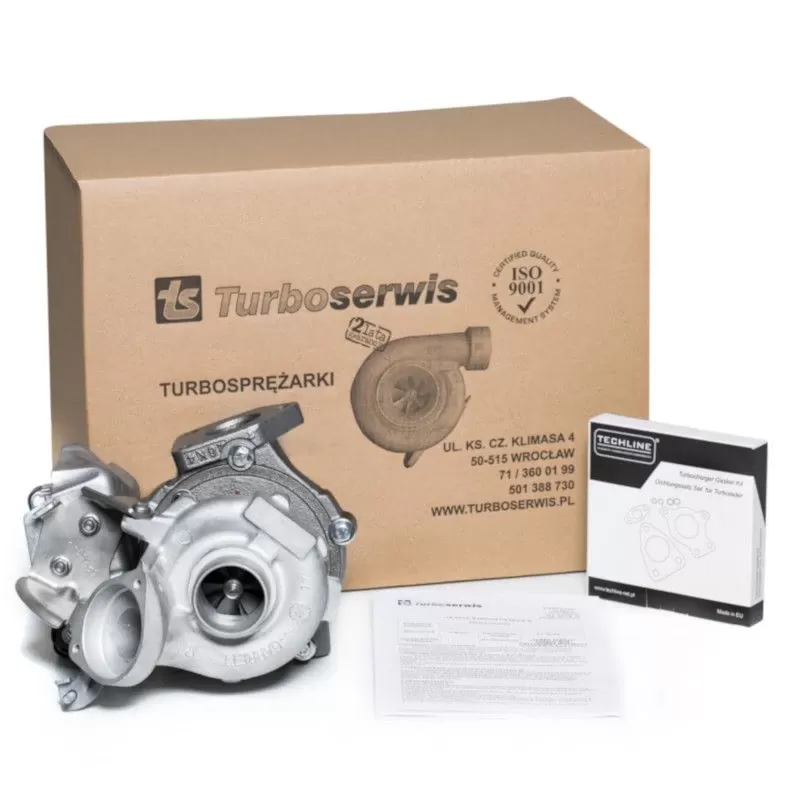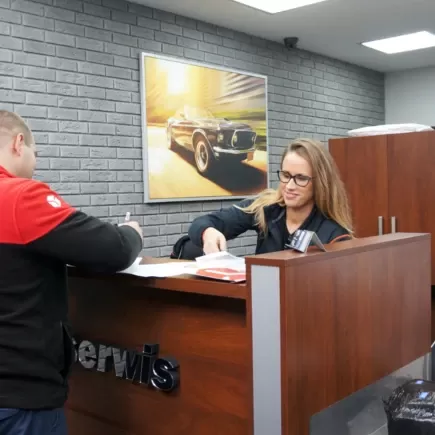We offer regeneration of turbochargers At the highest level for all models of cars and vans.
Why from such a huge competition in the market,
the vast majority of customers Selects Turbo Service?
- During repairs turbochargers, you have the guarantee check and balance it on the most modern equipment, which is World Class Leader:
SCHENCK RoTec GmbH
It is a model of balancing machine, which is used by manufacturers of turbochargers
- Turbochargers are balanced in with a load of up to 220 000 rpm – which makes that we are absolutely certain the correctness of operation and reliability of the service.
- We use only genuine new parts.
- We have one of the best specialized human resources experts in Europe.
- We have a modern machine park, which guarantees the highest level of service.
- We provide 24 months guarantee on the turbocharger.
- We have ISO Quality Certificate.
Repair and regeneration of turbochargers
See how we do it.
1 Step
Preliminary verification of damage
Each turbocharger is first analyzed by its technical condition, We check does the turbine rotor has no deviations from the standards in terms of radial clearance and axial and also we make discernment is there any oil in housing of turbocharger. After the above steps , we check the efficiency of the turbine control – valve exhaust vent , nozzle ring.

2 Step
Checking from the inside, sandblasting, replacement of the housing sleeve
The next stage is spinning the turbocharger by our employees to pieces and cleaning in special ultrasonic washers. This is to accurately locate lesions that were invisible during the initial inspection of the turbo. At this stage, we also inspect what was the direct cause damage to the turbocharger – information for the customer to be able to get rid of the cause, not just the effect.
Then sandblasting the turbine housing and the replacement of the housing sleeve bearing housing.
3 Step
Installation of new parts
This process involves replacement of worn parts, only for New and Original Parts.
Replacement: thrust bearing, bearings, trust collar, sealing rings, shaft and compressor wheels.
4 Step
Precision
The next step of repair, is very precise balancing of the shaft Wheel of turbocharger and balancing in around the rotating system. During balancing of rotating system, the achieved load is 000 to 220 rpm and the whole system is tested on balancing machine, which provides it with such operating conditions that prevail in the engine. Balancing of the whole system is the most important process during the whole repair. It is at this stage, we become certain that the turbocharger is fully operational (this is confirmed by printing protocol). Turbochargers are balanced in on the machine SCHENCK RoTec GmbH.
5 Step
Installation, adjustment
The penultimate stage of repair involves assembling all the elements of a turbocharger and the verification and precise regulation of the boost pressure – valve exhaust vent, nozzle ring.
Adjusting the nozzle ring is carried out using the latest machinery companies VISCOM and G3 CONCEPT.
6 Step
Return regenerated turbocharger back to Client
Fixed, Fully Efficient turbocharger, goes into your hands, along with two-year warranty and assembly manual.

TYPICAL FAILURES
Faulty turbocharger can cause many costly repairs … Discover the most common causes of the damage and learn how to prevent them.
Technology that helps.
Turbocharger, from the very beginning of his career, is designed to increase the performance of internal combustion engines, while reducing appetite for fuel. I must admit that usually does the job perfectly. Typically, because there are often situations when we saved the money you have to spend on …
… Repair of turbochargers. Are these devices really are so prone to injury? Do all have a limited life? And most importantly – what you can do to extend their life of significantly longer?
Meet the most common causes of damage to the turbocharger and find out how you can prevent them.
- The decrease in engine power and smoke on black – could indicate a leak intake system
- Jerking during acceleration – is the most common symptom of the locking mechanism of nozzle ring
- The appearance of oil in the intake system – fault of turbocharger seal
- Turning on the emergency mode of engine – while adding a gas, it is the effect of blurring nozzle ring
- Strange metallic sound – rubbing shaft wheel of housing, resulting in excessive slack or bad balancing (complete damage to the turbine)
- whistle at increased speed – faulty shaft wheel or compressor wheel of turbocharger
MACHINES
We have a modern machine park, which guarantees the highest quality:
- VISCOM PREMIUM
- TURBO TECHNICS 301
- 3G MIN FLOW
- SCHENCK TB SONIO




Help your turbine to operate properly
Proper operation is extremely important, so let’s get acquainted with some basic principles, the observance of which will make the life of the turbo will be significantly extended.
1. After starting the engine, use a gas gently, until the oil is warmed up.

Cold engine oil is dense, this means that the lubrication of all the components is difficult. Result – lack of lubrication of the shaft wheel:
So remember not to move the car immediately after the start – wait a few moments, let the engine work idle. When you move from the place, do not add much gas until the engine reaches normal operating temperature. The best distance for the first 5 km, not to exceed 2,500 rpm – for diesel and 3,000 rpm – for gasoline.
2. Just before stopping the engine, wait at least 60 seconds

Wait a minute, idling (especially after a fast ride), will allow the turbocharger to cool down. Few people realize that the turbo can warm up to the red (petrol engines).
Turning off the hot engine causes a sudden stop the flow of oil to the turbocharger – will be deprived of lubrication and produce a slurry (coke) on the bearings, which is the reason for the destruction of the device. Effect – damaged bearings of the turbocharger.
3. Use a high-quality engine oil and replace it regularly

Use the oil recommended by the manufacturer (preferably full-synthetic), but replace it every 10 – 15 thousand km! “We know the stories of the life of engines, which ended 300 000 km, just because the service recommended oil change every 30,000. In any case it ended in the same way. ” – Grzegorz Wolk. If you do not want to have problems with the turbine and engine – replace oil every 15 thousand km (full synthetic). Remember, the better the oil, the better engine lubrication, and better lubrication, a longer life.
4. Regularly replace the air filter

Imagine rotor compressor, rotating at a speed of up to 250 000 rpm … And now imagine how falls on him a few grains of sand … Though wheel compression done was the toughest metal pollution coming at them, they can cause enormous damage. So replace the air filter regularly, our recommended oil change.
5. Take care of good lubrication

Many turbochargers are damaged by clogged inlet pipe oil to the turbo. Wires become clogged by oil sludge (burnt oil). Effect – the lack of lubrication and cooling turbochargers out and therefore, if necessary, replace the oil pipes of the turbocharger.


